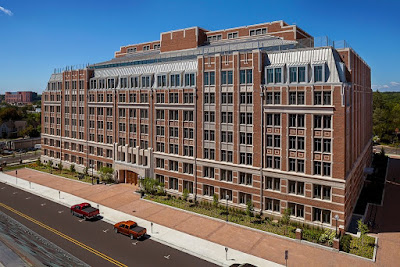For international graduate students whose fellowships cover the fall and winter terms and not the spring/summer term, the prospect of spending 4 months without a steady paycheck could be intimidating. Going home is certainly an option, but if you want to stick around and maybe travel around the United States, then having a little extra money during the summer months can be very helpful. Depending on your interests and skills, there are several opportunities that are available in the University.
For a stress-free summer job hunt, it is best to start early. Speaking with your adviser and your department and letting them know that you are available to work in the summer can go a long way in helping you to find suitable opportunities within your area of interest. The Rackham Graduate School administered summer awards are usually not available for first year students and since you can work full-time (up to 40 hours per week) in the summer, you may also consider other work options outside your department.
University Library
Student positions are available throughout the year, but there are several openings in the summer term. Create a profile in the library employment database and apply for positions that you are interested in.
Temporary University Employment
Different departments, organizations and centers within the university seek students for temporary positions. These are usually office or staff assistant positions with pay ranging between $10 and $18 per hour. Search and subscribe for updates on temporary employment options within the University during the summer months. You will have to have your resume and cover letter ready. Applications are usually open in February and the number of options increase by mid-March. The Student Employment Office and the Student Life job website are good places to look for temporary opportunities. Temporary Staffing Services (TSS) also provides opportunities for temporary work to cover special projects, events, and workflow peaks.
Skill-Based Opportunities
Does your research have a gender focus? Visit the Center for the Education of Women (CEW) website or reach out to them directly. Deadlines for summer funding opportunities are usually around mid-March.
Are you IT-savvy or does your work or research have a technology focus? Consider the ITS Summer Internship Program, which is offered by the Information and Technology Services. Deadline is usually around mid-March. You can also look for opportunities with ITS at the Campus Computing Centers.
Would you like you to be an International Center Peer Advisor? Check the International Center website for updates. Applications usually open in mid-February.
Are you interested in recreational sports? Opportunities are available at the various recreational sports centers on campus.
Since there isn’t a central hiring office within the University, the summer job-search can be time-consuming and confusing. However, there are many opportunities available and by considering the above options and applying early, you are most likely to have enough jobs to keep you busy (moderately!) in the summer. Please remember to be patient, since you will hear from most employees by early-mid April only. Good luck and have a great first year at the University of Michigan!
Written by Naivedya Parakkal
International Center Summer Orientation Peer Adviser
Country of Origin: India
Ph.D. student in Education


